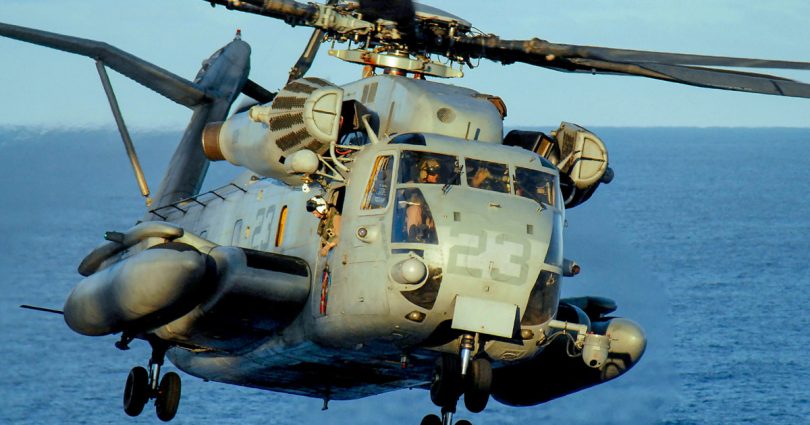The U.S. Marine Corps on Friday released the identities of the five Marines who were killed after their helicopter crashed while flying from Nevada to California during a routine training mission.
They were Lance Cpl. Donovan Davis, 21, of Olathe, Kansas; Sgt. Alec Langen, 23, of Chandler, Arizona; Capt. Benjamin Moulton, 27, of Emmett, Idaho; Capt. Jack Casey, 26, of Dover, New Hampshire; and Capt. Miguel Nava, 28, of Traverse City, Michigan.
All were assigned to Marine Heavy Helicopter Squadron 361, Marine Aircraft Group 16, 3rd Marine Aircraft Wing. They were based at Marine Corps Air Station Miramar, California.
The helicopter they were in, a CH-53E Super Stallion, went missing Tuesday and was found Wednesday in a remote area covered in snow in Southern California.
The crew was flying from Creech Air Force Base in Nevada, north of Las Vegas, to Marine Corps Air Station Miramar, California, “when the aircraft was reported overdue,” the 3rd Marine Aircraft Wing said in a statement.
It’s unclear what caused the crash, which occurred as a winter storm brought days of heavy rain and snow to the San Diego area.
An investigation is ongoing.
Davis, a helicopter crew chief, enlisted in 2019 and was promoted last month to the rank of Lance Corporal, the Marine Corps said. His decorations include the Global War on Terrorism Service Medal, National Defense Service Medal, and a Sea Service Deployment Ribbon.
Langen, also a helicopter crew chief, enlisted in 2017. His decorations include the Navy and Marine Corps Achievement Medal, Good Conduct Medal, Global War on Terrorism Service Medal, National Defense Service Medal, and two Sea Service Deployment Ribbons.
Moulton, Casey and Nava were all pilots aboard the Super Stallion.
Moulton and Casey were both commissioned in 2019 and received the National Defense Service Medal. Nava was commissioned in 2017 and received the Global War on Terrorism Service Medal, National Defense Service Medal and Sea Service Deployment Ribbon.
“We have been confronted with a tragedy that is every service family’s worst fear,” Lt. Col. Nicholas J. Harvey, commanding officer of HMH-361, said in a statement Friday.
“Our top priority now is supporting the families of our fallen heroes, and we ask for your respect and understanding as they grieve, » Harvey added. « The Flying Tigers family stands strong and includes the friends and community who have supported our squadron during this challenging time. We will get through this together.”
The Marines have been using the powerful Super Stallion to transport heavy equipment, supplies and troops for more than 30 years, according to the Navy, which the Marine Corps is part of.
The aircraft has been previously scrutinized due to repeated mechanical failures. In 2014, a Super Stallion carrying 25 service members crashed due to the catastrophic failure of one of the aircraft’s engines, although all the passengers survived.
Then in 2018, four Marines were killed when their Super Stallion crashed during a training mission in Southern California. A Marine investigation found the crash was caused by a defective part, according to a lawsuit filed by the families of the Marines against the supplier and manufacturer of the part.
The case was settled two years ago, according to Dave Casey, the San Diego attorney representing the pilots. The settlement is confidential.
The five pilots and crew members in the latest crash were “serving a calling greater than self and were proud to do so,” Maj. Gen. Michael J. Borgschulte said in a statement.
“We will forever be grateful for their call to duty and selfless service,” Borgschulte said.
In a statement Thursday, President Joe Biden called the Marines “our nation’s finest warriors.”
“Our service members represent the very best of our nation,” he said, “and these five Marines were no exception.”
Source link








